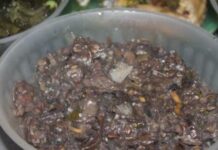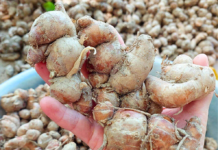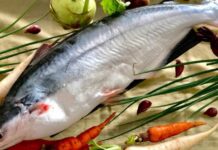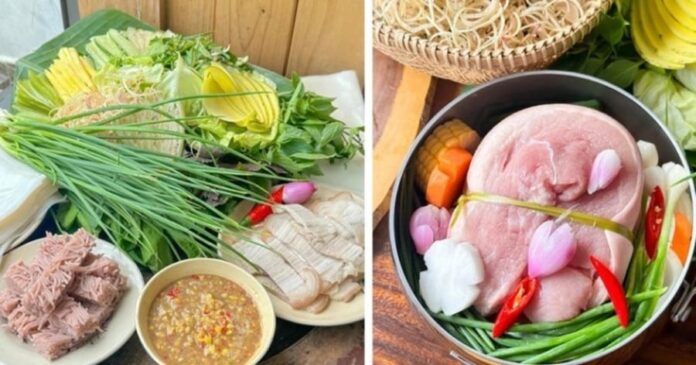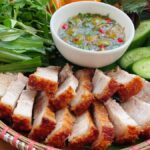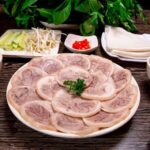Boiling Meat Without Water Retains Its Natural Sweetness
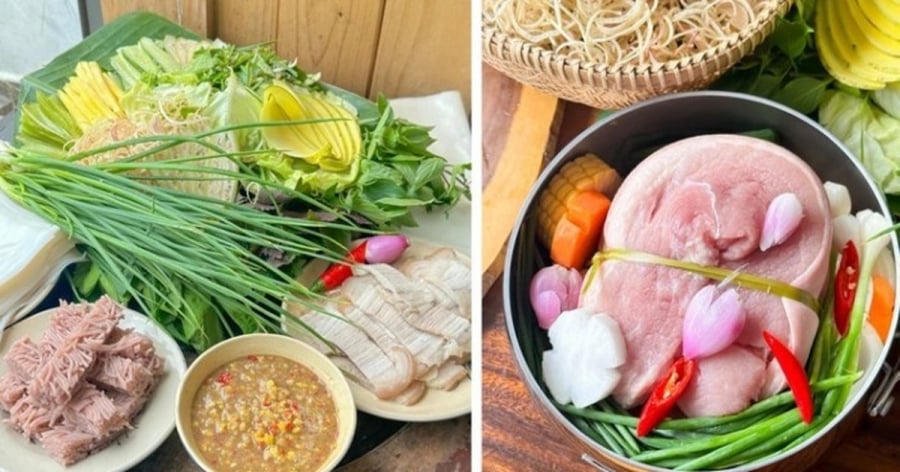
Ingredients for Delicious Meat Boiling Without Water
Ingredients: Pork belly or pork shoulder (a little fat will keep the meat tender and moist); A pinch of salt.
Instructions: First, rinse the meat and pat it dry. Cut the meat into large chunks to retain moisture.
Next, sprinkle a little salt over the meat and rub it in. Let it marinate for about 10-15 minutes. Salt enhances the natural flavor of the meat and makes it more savory.
Then, use a thick-bottomed pot and place it on the stove. Heat the pot over low heat. Once the pot is hot, add the meat and cover with a lid. Initially, maintain low heat to allow the meat to release its moisture.
When the pot has accumulated steam from the meat, increase the heat to medium and keep the lid on. The meat will cook in its own steam without the need for added water. Occasionally, lift the lid and flip the meat to ensure even cooking.
Depending on the thickness of the meat, the boiling time will vary, but it typically takes around 20-30 minutes. To check if the meat is done, pierce it with a pair of chopsticks; if they go through easily and no red juice comes out, the meat is ready.
Once the meat is cooked, remove it from the pot and let it cool down before slicing it thinly. Meat boiled without water will have a natural sweetness and enhanced flavor.
Lining the Pot for Added Flavor
When boiling meat without water, you can also line the bottom of the pot with various ingredients to retain moisture, prevent burning, and enhance the flavor. Here are some common lining methods:
Banana leaves: Line the bottom of the pot with banana leaves before placing the meat on top. This will prevent sticking and impart a natural aroma.
Onion and ginger: Cut onion or shallot into thick slices and lay them at the bottom of the pot. Sliced ginger can also be added for extra fragrance and to prevent the meat from burning.
Pandanus or lemongrass: If you have pandanus leaves or lemongrass, chop them finely and line the bottom of the pot. Pandanus will lend a subtle fragrance, while lemongrass will give the meat a distinctive aroma.
Pork fat: If using pork belly, trim some fat from the meat and line the bottom of the pot. The fat will melt during cooking, preventing the meat from sticking and drying out.
Boiling Meat With Water for Tenderness
Meat Preparation: Choose a tender cut like pork belly or pork tenderloin. Rinse the meat and pat it dry. Cut it into large chunks to retain moisture.
Blanching in Boiling Water: Place the meat in a pot of cold water, ensuring the water covers the meat. Add a pinch of salt and bring it to a boil for 1-2 minutes. Then, remove the meat, and rinse it in cold water to get rid of any foam and impurities, resulting in cleaner and more fragrant meat.
Boiling With Medium Heat: Put the meat back into the pot, add water to cover the meat, and bring it to a boil. Reduce the heat to a gentle simmer and add 2 crushed cloves of garlic or 1 sliced onion, along with a few slices of ginger, to enhance the flavor. Cooking the meat at a medium temperature allows it to cook slowly, retaining moisture and tenderness.
Timing the Boil: The boiling time will depend on the type and thickness of the meat. It usually takes around 20-30 minutes. To check if the meat is done, pierce it with a pair of chopsticks; if they go through easily and no red juice comes out, the meat is ready.
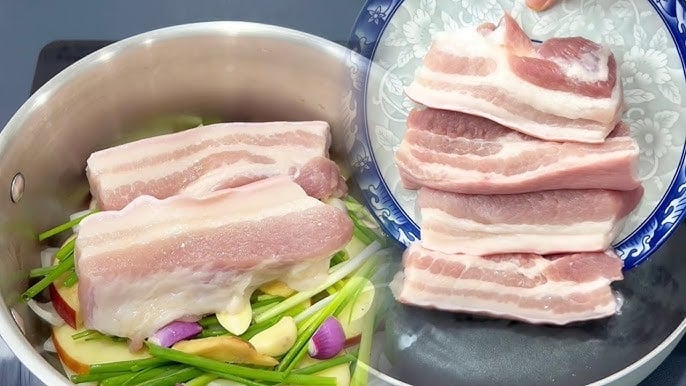
Boiling Pork to Perfection: Tender, Sweet, and No Water Needed
Cold Water Plunge: After the meat is cooked, immediately plunge it into cold water (or ice water) for 5-10 minutes. This step helps the meat firm up and retain its sweetness without drying out.
Slicing and Serving: Slice the meat when it has cooled down to preserve its tenderness. Boiled meat is best enjoyed thinly sliced, paired with a dipping sauce like fish sauce with chili, garlic, and lime, and fresh herbs.
The Ultimate Weekend Comfort Food: 3 Crispy, Golden Fried Delights
Spend a chilly weekend indulging in the ultimate comfort food: fried delights! There’s nothing quite like the aroma and crunch of perfectly fried treats to warm your soul. Gather your loved ones and get ready to impress with these three simple yet incredible fried recipes that are perfect for a cozy winter feast.












